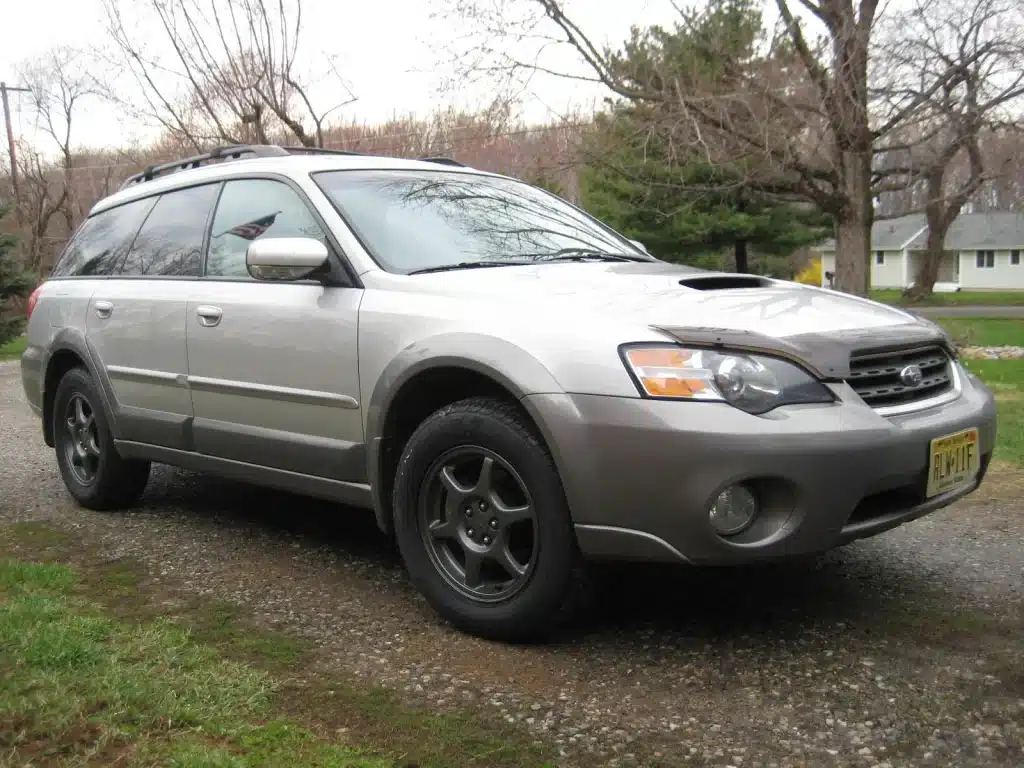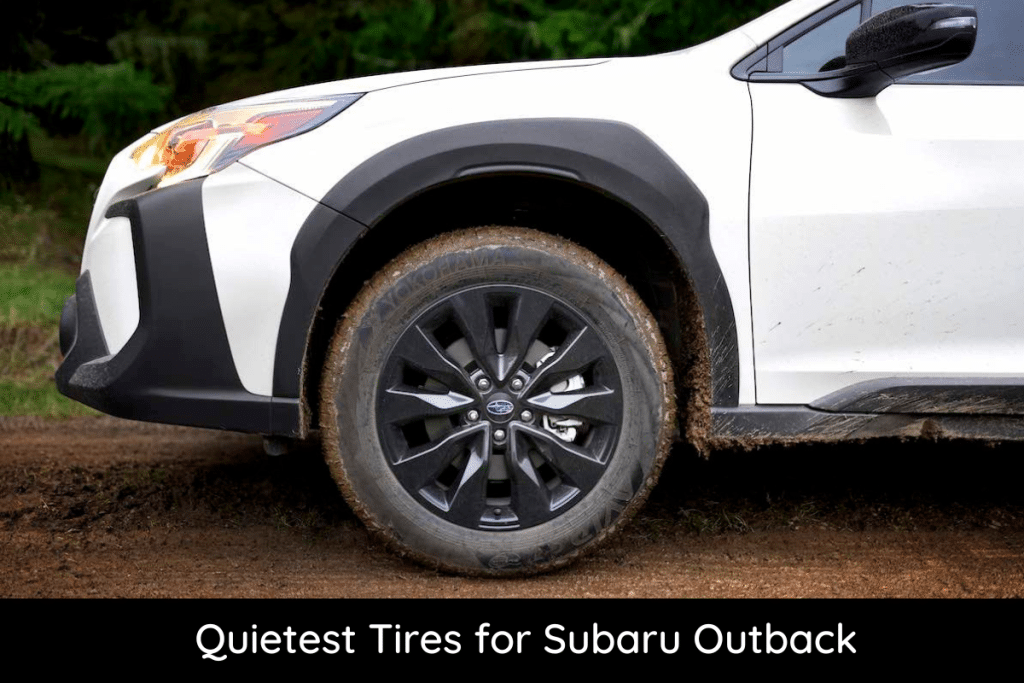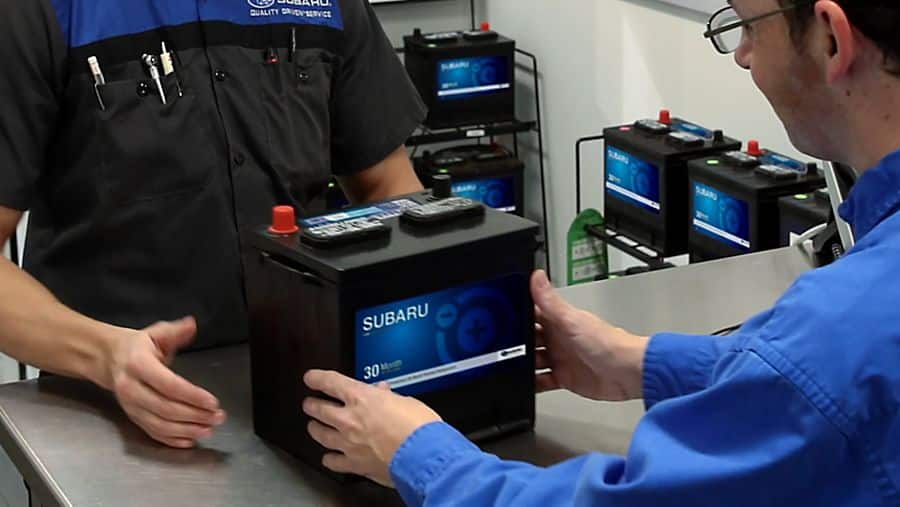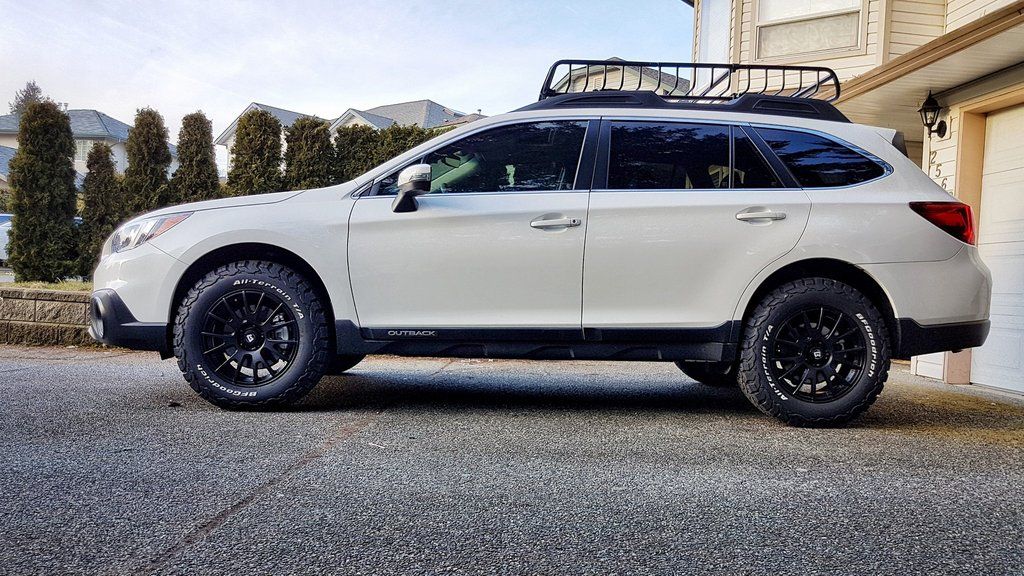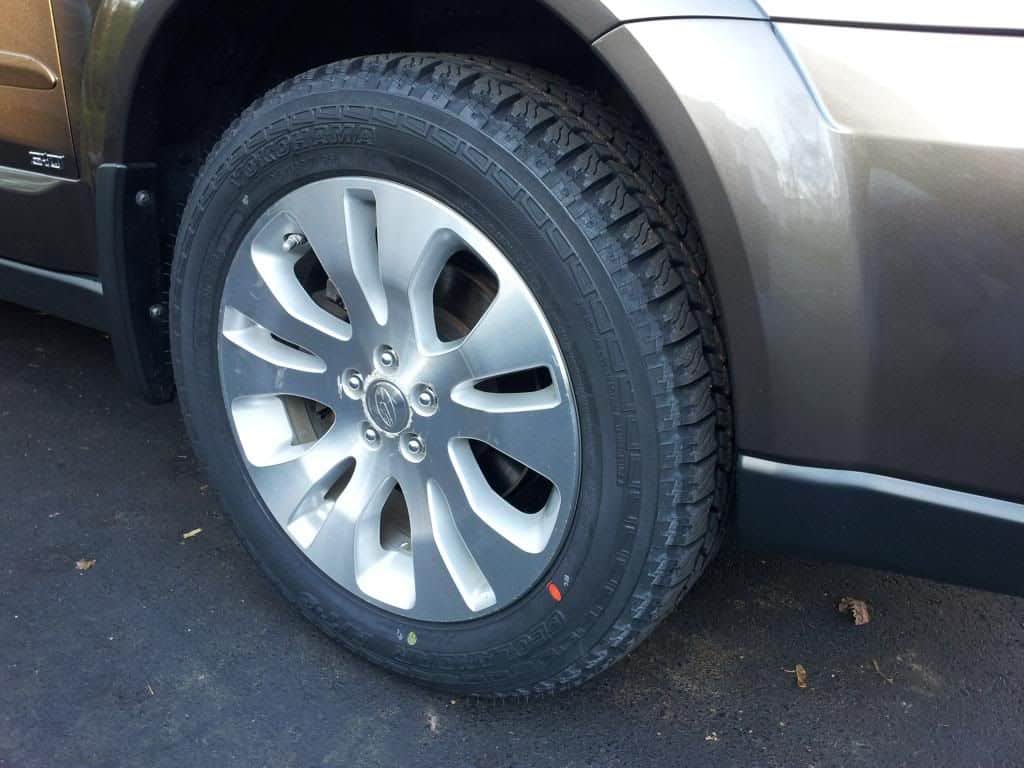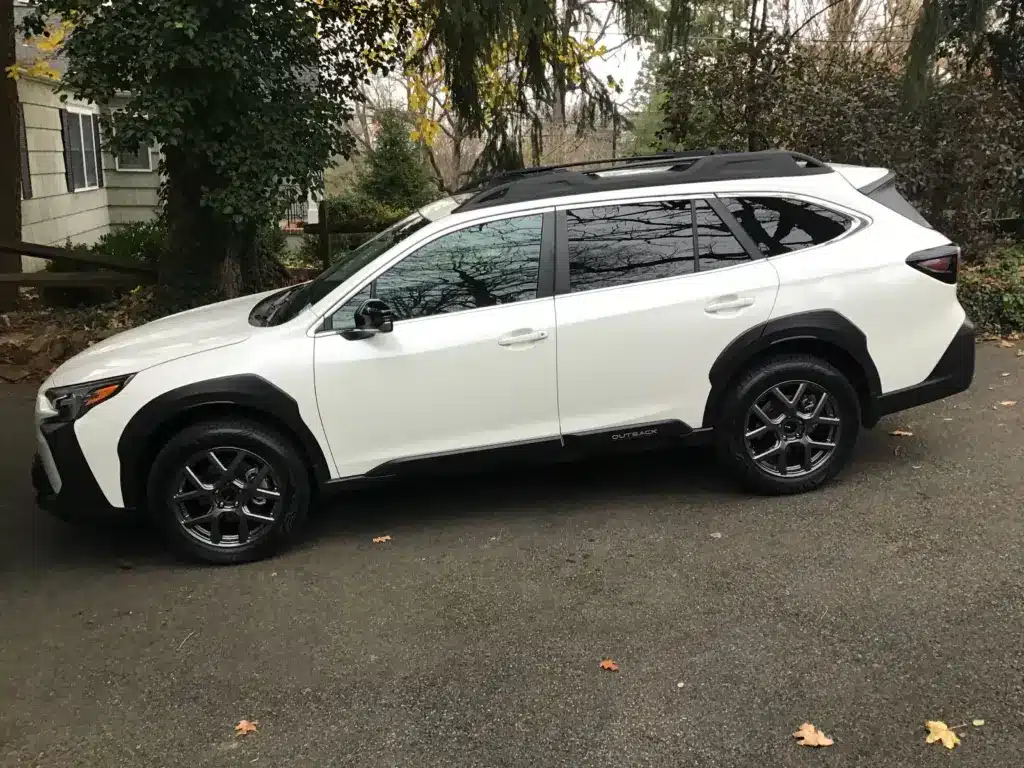| Year | Engine | Belt or Chain | Service Interval |
|---|---|---|---|
| 2000-2004 | 3.0L 6-cyl EZ30D | Timing chain | Lifetime |
| 2000-2004 | 2.5L 4-cyl EJ253 | Timing belt | 100,000 miles |
| 2005-2009 | 3.0L 6-cyl EZ30D | Timing chain | Lifetime |
| 2005-2009 | 2.5L 4-cyl EJ255 Turbo | Timing belt | 100,000 miles |
| 2005-2009 | 2.5L 4-cyl EJ253 | Timing belt | 100,000 miles |
| 2010-2014 | EJ253 Outback 2.5 | Timing belt | 100,000 miles |
| 2010-2014 | 2.5L 4-cyl FB25 | Timing chain | Lifetime |
| 2010-2014 | 3.6L 6-cyl EZ36D | Timing chain | 105,000 miles |
| 2015-2019 | FA20DIT Outback 2.0T | Timing chain | 105,000 miles |
| 2015-2019 | FB25 Outback 2.5i | Timing chain | Lifetime |
| 2015-2019 | EZ36D Outback 3.6R | Timing chain | 105,000 miles |
| 2020-2023 | 2.4L 4-cyl FA24 Turbo | Timing chain | Lifetime |
| 2020-2023 | 2.5L 4-cyl FB25D | Timing chain | Lifetime |
When it comes to ensuring the robust performance and longevity of your Subaru Outback, understanding the difference between a timing belt and a timing chain is critical. If you’re like me, you take your vehicle’s maintenance schedule seriously, recognizing that diligent care is key to reliable transportation.
Whether planning a timing belt replacement on an older model or examining the resilience of a newer Subaru Outback’s timing chain, each plays a vital role in your car’s engine maintenance.
As an informed owner, staying ahead of your Subaru Outback’s maintenance needs means being aware of the type of timing mechanism your vehicle employs.
I’ve personally experienced the peace of mind that comes with knowing the inner workings of my Outback, particularly when it comes to the critical timing system that keeps everything running like clockwork.
Key Takeaways
- Subaru Outbacks from 1994-1999 use timing belts; maintenance is essential to prevent engine damage.
- Models from 2021-2023 have adopted timing chains, reflecting advancements in engine durability.
- Understanding whether your Subaru Outback has a timing belt or chain is critical for proper engine maintenance.
- Following the Subaru Outback maintenance schedule, especially for timing belt replacement, is necessary for older models.
- For models with timing chains, although deemed ‘lifetime’, inspection is recommended for ensuring engine longevity.
- Being proactive with Subaru Outback engine maintenance can save on costly repairs down the line.
Understanding the Timing System in Your Subaru Outback
As a diligent Subaru Outback owner, understanding the intricacies of your vehicle’s timing system is vital to ensure its longevity and optimal engine performance. This timing system involves a series of components that coordinate the opening and closing of the engine valves during the intake and exhaust strokes, a dance that keeps the engine running smoothly.
The type of timing mechanism employed—is it a timing belt or a timing chain?—is fundamental to figuring out replacement intervals and maintenance operations.
Many ask, “does the 2016 Subaru Outback have a timing belt or chain?” This question reflects the transition phase in Subaru Outback engine design, moving from timing belts to timing chains to improve durability and reduce maintenance needs.
My first-hand experience with various models shows that Subaru made significant shifts to improve the engines’ robustness, and understanding this evolution clarifies the maintenance requirements specific to your vehicle’s model year.
For those pondering, “what year did Subaru Outback get timing chain?,” it’s fascinating to note that Subaru began incorporating timing chains in 2013 for 4-cylinder engines and from 2001 for all 6-cylinder models.
This move was a game-changer, heralding an era in which the engines were designed to require less frequent intervention, given the superior durability of timing chains.
| Model Year | Engine Specification | Timing Belt or Chain | Replacement Interval |
|---|---|---|---|
| 1994 – 2012 (4-cylinder) | 2.5L SOHC EJ25 (varies by year) | Timing Belt | Approx. 105k Miles |
| 2001 – 2019 (6-cylinder) | 3.0L DOHC EZ30 / 3.6L DOHC EZ36 | Timing Chain | Engine’s Lifetime |
| 2013 – 2023 (4-cylinder) | 2.5L DOHC FB25 (varies by year) | Timing Chain | Engine’s Lifetime |
The above table concisely illustrates the timing system used in Subaru Outback vehicles across different model years. This data becomes invaluable when assessing potential maintenance needs and costs, which are inherently connected to Subaru Outback engine longevity and performance.
It’s critical to acknowledge that while timing chains generally do not require replacement, it is always advisable to inspect them periodically to ensure they are in good condition.
I always advise fellow Subaru Outback owners to be aware of their vehicle’s maintenance schedule, especially when it is equipped with a timing belt, as preventive care is far less costly than major engine repairs resulting from a snapped belt.
If you’re planning to buy a used Subaru Outback or just eager to maintain your current vehicle, ensure you know the specifics of its timing system. Whether your beloved Subaru requires a belt or chain can significantly affect how you strategize your car care and manage engine health for the journeys ahead.
Key Signs and Impacts of Timing Belt or Chain Failure
As a Subaru Outback owner, I’m always tuned in to my vehicle’s health, particularly regarding the vital timing components. Knowing the warning signs of Subaru Outback timing component wear can be the difference between a simple service and extensive engine repair.
Thus, I’m here to help guide you through the symptoms, consequences, and preventative measures associated with timing system issues.
Symptoms of Timing Component Wear
There are specific warning signs every Outback owner should monitor. The sound of your engine can offer the first clue—any unusual noises emerging from the timing cover area could signal wear or a loose timing belt or chain. Other indicators include engine misfires, which may occur if the timing components are failing to synchronize the valves and pistons accurately.
Keep an eye out for oil leaks around the timing cover; this can suggest a degraded seal that may compromise the timing components’ integrity. Lastly, take immediate action if you turn the key and your engine fails to start; this could be a sign that the timing belt or chain has snapped.
Consequences of Timing Failure for Engine Performance
Ignoring the tell-tale signs of timing component deterioration can lead to grave outcomes. In our beloved Subaru Outbacks, which are known for their interference engines, a timing belt failure can have catastrophic results. Bent valves, damaged cylinder heads, or compromised camshafts are all possible if the belt snaps. These types of engine failures are not just inconvenient; they are costly and can significantly hinder your Outback’s performance and engine durability.
Preventative Measures and Maintenance Tips
Maintenance is paramount when it comes to preventing premature wear and potential failure. For Subaru Outbacks that require a timing belt service—a characteristic of older models—the recommended interval is generally 105k miles. Don’t let this milestone pass without inspection or replacement.
Though newer Outback models boast timing chains with a ‘lifetime’ expectancy, it’s wise to remain vigilant and have them inspected during routine Subaru Outback maintenance checks.
Here are some essential maintenance tips for owners:
- Follow the Outback’s scheduled service intervals as outlined in the owner’s manual.
- If you hear any strange noises from the engine, or if the vehicle misfires, consult a professional mechanic immediately.
- Keep up with regular oil changes, as clean oil is crucial for keeping timing components lubricated and functioning properly.
- Even ‘lifetime’ timing chains should be inspected occasionally for wear, especially if experiencing symptoms of engine distress.
Always remember, being proactive with Subaru Outback preventative maintenance is essential. It is the surest way to prolong the life of your vehicle’s engine and avoid the knock-on effects of a timing belt failure. To underscore the importance of this component, allow me to share a quote that a seasoned mechanic once told me:
When it comes to an interference engine like that of the Subaru Outback, the timing belt is not just a component; it is the lifeline of the engine. Neglect it, and you court disaster.
Taking care of your Subaru Outback’s timing components isn’t an option; it’s a necessity. And with the right knowledge and a timely response to the symptoms of wear, you can ensure that your Outback will deliver the engine durability and reliability that the brand is known for.
| Maintenance Aspect | Details |
|---|---|
| Timing Belt Replacement Interval | Every 105k miles or as specified in the owner’s manual |
| Timing Chain Inspection | Periodically, despite ‘lifetime’ expectancy |
| Signs of Timing Wear | Engine noise, misfires, oil leaks, non-starting engine |
| Professional Evaluation | Seek assessment from a qualified mechanic at any sign of trouble |
The Evolution of Subaru Outback Timing Mechanisms over the Years
Over time, the Subaru Outback has undergone significant changes in its engineering, specifically when it comes to the critical timing mechanisms orchestrating engine performance.
Reflecting on the Subaru Outback timing belt evolution, early models from 1994 to 1999 relied on timing belts, a standard of their era, ensuring precision in valve movement but necessitating regular, mileage-based replacement.
This was the era I remember clearly; the 105k mile service mark was a significant maintenance event for every Outback owner I knew.
Transitioning into the 2000s, and reaching a pivotal moment in the mid-2010s, Subaru’s focus shifted towards longevity and reduced maintenance.
The Subaru Outback timing chain evolution began, with the 2013 4-cylinder models first adopting chains, and 2001 marking the incorporation of chains in all 6-cylinder models.
This advancement was a clear testament to Subaru’s commitment to enhancing their vehicle’s endurance and dependability, a move that aligned well with the brand’s reputation for crafting long-lasting, durable vehicles.
A detailed Subaru Outback model comparison shows that the manufacturer has consistently aimed to innovate and improve.
Today, with the latest models touting timing chains designed to last the engine’s lifetime, Subaru Outback owners can enjoy increased peace of mind, knowing that their car is built to stand the test of time with minimal disruption to their driving experience.
FAQ
What’s the difference between a Subaru Outback timing belt and timing chain?
A timing belt is a rubber belt that synchronizes the rotation of the engine’s crankshaft and camshaft, while a timing chain serves the same purpose but is made of metal links. The timing chain is generally more durable and designed to last the engine’s lifetime.
How often should I replace my Subaru Outback timing belt?
For older Subaru Outback models with timing belts, it’s recommended to replace the belt approximately every 105,000 miles or according to the maintenance schedule specified in the owner’s manual.
Does my 2016 Subaru Outback have a timing belt or a timing chain?
The 2016 Subaru Outback is equipped with a timing chain for both the 4-cylinder and 6-cylinder engine options.
What year did Subaru Outback get timing chains?
Subaru Outback models began transitioning to timing chains in 2013 for 4-cylinder engines. All 6-cylinder models have had timing chains since 2001.
What are the signs of timing belt or chain wear in my Subaru Outback?
Look out for unusual noises coming from the timing cover area, engine misfires, oil leaks around the timing cover, or if the engine won’t start—these could be signs that your timing belt or chain needs attention.
What can happen if the timing belt or chain fails in my Subaru Outback?
If the timing belt or chain snaps, it can cause significant engine damage, such as bent valves, damaged cylinder heads, or camshafts since Subaru engines are interference engines. Therefore, following the replacement schedule is crucial to avoid costly repairs.
How can I maintain my Subaru Outback’s engine for better longevity and performance?
Adhere to the Subaru Outback maintenance schedule for timing belts or inspecting chains, watch for signs of wear, get regular engine check-ups, and address any issues promptly. A well-maintained engine can have a longer lifespan and perform better.
Has the Subaru Outback always used the same type of timing mechanism?
No, the Subaru Outback’s timing mechanism has evolved; models from 1994 to the early 2000s typically used timing belts, while later models, especially after 2010, incorporated timing chains to improve engine durability and reduce maintenance needs.




